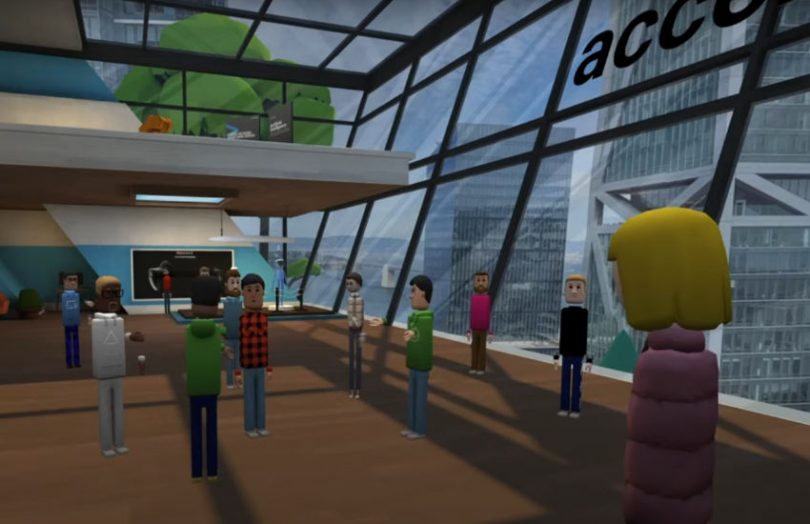Ledger Insights is a media partner of the Hyperledger Global Forum, which starts in Dublin on Monday and will also be live streamed. Accenture’s Melanie Cutlan will be presenting a keynote on the metaverse.
Accenture envisions the metaverse as the next generation of the internet. Rather than just one concept, it sees the metaverse as a continuum that bridges the internet of place and the internet of value. And because of COVID, the company has already deployed the technology at scale.
During the pandemic, the company onboarded 150,000 new team members virtually. Instead of purely using Zoom, a new Accenture employee received a laptop and an XR headset in the post. Their first experience was immersive at the virtual One Accenture Park. They were then involved in team collaboration during multiple meet-and-greets, large and small group meetings and town halls.
Metaverse consumer use cases
While that’s more of an enterprise use case, what has ignited excitement is the consumer applications of the metaverse.
The business case for consumer goods, especially luxury ones, seems relatively obvious in the metaverse. Morgan Stanley estimates the metaverse is a €50 billion ($50bn) revenue opportunity for the luxury sector by 2030. And there has been a procession of fashion brands jumping on board. Users are represented by avatars and want to look their best, so they’re willing to spend money on the right clothes. That’s a good example of that continuum of the internet of place and value.
But with several banks setting up shop in the metaverse, their presence is slightly less obvious. Melanie Cutlan, who leads Accenture’s Metaverse Technology Capabilities clarified.
“Underpinning the metaverse has to be a universal wallet infrastructure where I could take my money, my identity, my tokens, and my credentials, and carry them with me into these digital experiences,” said Cutlan. ” It will mean reimagining customer support and rethinking engagement models.”
That’s one of the areas where Hyperledger has a lot to bring to the party with its work around identity and verifiable credentials. Not only can a bank verify a customer’s identity, but the client can choose to share some of the data in their wallet with the bank, say for a mortgage application. And then there’s the customer service aspect. “People want to talk to people, but they don’t always want to go to a site,” added Cutlan.
There are numerous potential metaverse enterprise applications, with HR onboarding just one example. Another that’s been deployed by Accenture is creating a supply chain control room as an immersive experience that combines digital twins of a product moving through the supply with track and trace data.
What’s different this time around?
Virtual reality was all the rage during the Second Life era more than 15 years ago. Big names like Google and Sony gave it a go but later pulled out. So what’s different this time around?
Cutlan noted that the technology has moved on. Creating 3D immersive spaces today is far simpler than back then. And XR headsets create a more collaborative immersive experience that moves consumer expectations forward.
The bank use case is an example of securing data and information better than we have in the past. Pandemic lockdowns changed the way we work. But perhaps the biggest driver is that money is changing hands at scale.
Another big draw is the fun aspect.
Having been a blockchain leader at Accenture for years, Cutlan sees a very different dynamic with the metaverse. Because it’s visual and experiential, the metaverse is “a little bit easier to grasp from a leadership perspective,” said Cutlan. “I don’t know anyone who saw early days blockchain demos and said, ‘I need to show 20 of my friends’.”






